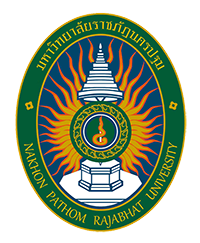 การประชุมวิชาการระดับชาติ ครั้งที่ 16
|
| Title | Assessing Cassava Production Technology Utilizing Plant Models to Enhance Efficiency in Soil Series Group 56 within an Average Annual Rainfall Zone of 1,000-1,200 mm: A Case Study in Chainat Province. |
|---|---|
| Other Titles: | การทดสอบเทคโนโลยีการผลิตมันสำปะหลังจากแบบจำลองพืชเพื่อเพิ่มประสิทธิภาพการผลิตมันสำปะหลังในกลุ่มชุดดินที่ 56 เขตปริมาณน้ำฝนรายปีเฉลี่ย 1,000-1,200 มิลลิเมตร จังหวัดชัยนาท |
| Authors EN |
|
| Authors TH |
|
| Keywords | Utilizing Plant Models,Cassava,Soil Series |
| Issue Date | 13-Aug-2024 |
| Publisher | The 16th NPRU National Academic Conference Nakhon Pathom Rajabhat University |
| Abstract | The study aimed to develop and assess a testing method for cassava production, utilizing plant models in Soil Group 56, Chainat Province, within an average annual rainfall zone of 1,000–1,200 mm. The objective was to enhance efficiency cassava in soil series group 56 in chainat province. The research was conducted from October 2022 to February 2023, focusing on the Nernkham District, Chainat Province. Various management conditions were explored, and key factors were analyzed using decision tree model techniques to identify efficient cassava production technologies. The identified technology set was evaluated for convenience of management and suitability for the area. Subsequently, the chemical fertilizer amount determined by soil analysis values was tested and use variety that farmers grow. In April until October, planting densities of 1,800-2,000 plants per rai were compared against the farmers' conventional approach, utilizing chemical fertilizer at the same density with variety that farmers grow. Analysis of the technology test results revealed significant statistical variance in cassava yield. (DOA) The testing method yielded an average weight of 6,064 kilograms per rai, while the farmers' method yielded 5,192 kilograms per rai. Although the testing method resulted in a higher cassava yield compared to the farmers' method, with a decrease of 872 kilograms per rai (14.38 percent), The testing method flour an average percent of 24.30 percent, while the farmers' method flour 22.60 percent. Although the testing method resulted in a higher cassava flour compared to the farmers' method, with a decrease of 1.70 percent (7.00 percent). The testing method also showed a higher cost of production at 4,528 baht per rai compared to the farmers' method at 4,364 baht per rai, representing an 3.75 percent. Despite the lower yield in (DOA) the testing method yielded a higher income of 16,372 baht per rai, compared to the farmers' method, indicating an increase of 14.38 percent.
Furthermore, (DOA) the testing method demonstrated a higher net income of 11,845 baht per rai, reflecting a 18.38 percent increase over the farmer's method. The income-to-investment ratio (BCR) for the testing method was calculated at 3.78, whereas the farmer's method yielded a BCR of 3.50. These results suggest that the testing method offers a higher return on investment compared to the farmer's method, making it a more financially viable option.
|
| ISBN | 978-974-7063-46-2 |
| URI | https://rdi.npru.ac.th/conference16 |